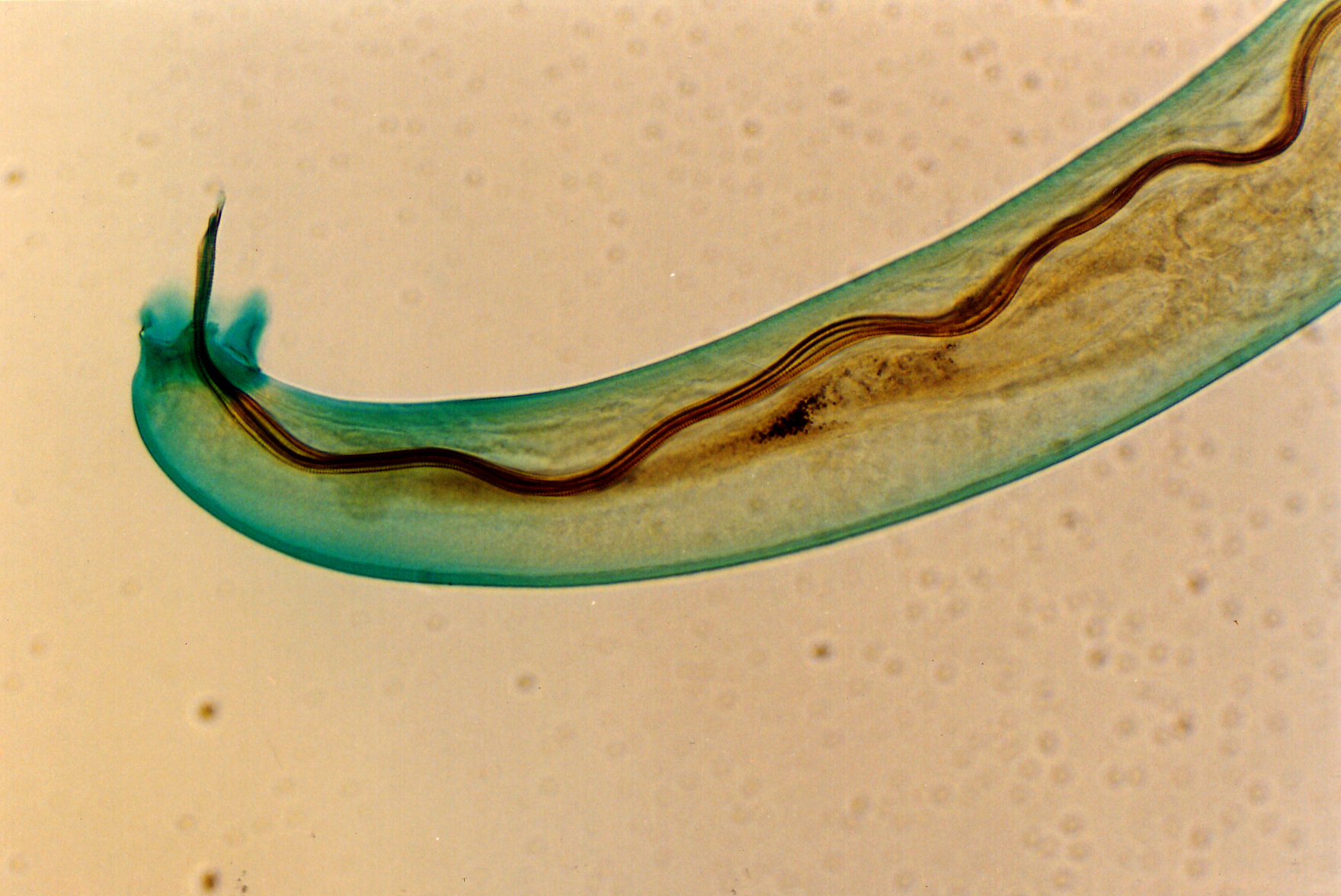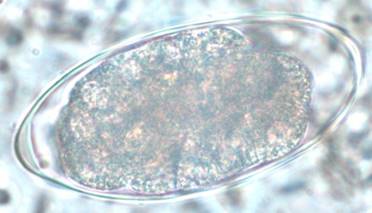|
Angiostrongylus
''Angiostrongylus'' is a genus of parasitic nematodes in the family Metastrongylidae. Species Species in the genus * ''Angiostrongylus cantonensis ''Angiostrongylus cantonensis'' is a parasitic nematode (roundworm) that causes angiostrongyliasis, the most common cause of eosinophilic meningitis in Southeast Asia and the Pacific Basin. The nematode commonly resides in the pulmonary arteries ...'' (Chen, 1935) * '' Angiostrongylus costaricensis'' Morera & Cespedes, 1971 * '' Angiostrongylus vasorum'' Baillet, 1866 References Strongylida Secernentea genera {{Secernentea-stub ... [...More Info...] [...Related Items...] OR: [Wikipedia] [Google] [Baidu] |
Angiostrongylus Cantonensis
''Angiostrongylus cantonensis'' is a parasitic nematode (roundworm) that causes angiostrongyliasis, the most common cause of eosinophilic meningitis in Southeast Asia and the Pacific Basin. The nematode commonly resides in the pulmonary arteries of rats, giving it the common name rat lungworm. Snails are the primary intermediate hosts, where larvae develop until they are infectious. Humans are incidental hosts of this roundworm, and may become infected through ingestion of larvae in raw or undercooked snails or other vectors, or from contaminated water and vegetables. The larvae are then transported via the blood to the central nervous system, where they are the most common cause of eosinophilic meningitis, a serious condition that can lead to death or permanent brain and nerve damage. Angiostrongyliasis is an infection of increasing public health importance, as globalization contributes to the geographic spread of the disease. History First described by the renowned Chin ... [...More Info...] [...Related Items...] OR: [Wikipedia] [Google] [Baidu] |
Angiostrongylus Vasorum
''Angiostrongylus vasorum'', also known as French heartworm, is a species of parasitic nematode in the family Metastrongylidae. It causes the disease canine angiostrongylosis in dogs. It is not zoonotic, that is, it cannot be transmitted to humans. Not much is known about the biology of this species. Description These nematode worms are small and pinkish in color. The length is 14.0–20.5 mm. The width is 0.170-0.306 mm.Conboy G. A. (30 May 2000"Canine Angiostrongylosis (French Heartworm)" In: Bowman D. D. (Ed.) ''Companion and Exotic Animal Parasitology''. International Veterinary Information Service. Accessed 24 November 2009. Females have a barbers pole appearance. Life cycle The life cycle begins when L3 larvae are ingested by a definitive host, primarily the fox or dog. This can be through eating mollusc (intermediate hosts), frogs (paraentenic hosts), or from food infected with slime from the slugs or snails. The L3 larvae migrate to the mesenteric lymph ... [...More Info...] [...Related Items...] OR: [Wikipedia] [Google] [Baidu] |
Angiostrongylus Chabaudi
''Angiostrongylus'' is a genus of parasitic nematodes in the family Metastrongylidae. Species Species in the genus * ''Angiostrongylus cantonensis'' (Chen, 1935) * '' Angiostrongylus costaricensis'' Morera & Cespedes, 1971 * ''Angiostrongylus vasorum ''Angiostrongylus vasorum'', also known as French heartworm, is a species of parasitic nematode in the family Metastrongylidae. It causes the disease canine angiostrongylosis in dogs. It is not zoonotic, that is, it cannot be transmitted to huma ...'' Baillet, 1866 References Strongylida Secernentea genera {{Secernentea-stub ... [...More Info...] [...Related Items...] OR: [Wikipedia] [Google] [Baidu] |
Angiostrongylus Daskalovi
''Angiostrongylus'' is a genus of parasitic nematodes in the family Metastrongylidae. Species Species in the genus * ''Angiostrongylus cantonensis'' (Chen, 1935) * '' Angiostrongylus costaricensis'' Morera & Cespedes, 1971 * ''Angiostrongylus vasorum ''Angiostrongylus vasorum'', also known as French heartworm, is a species of parasitic nematode in the family Metastrongylidae. It causes the disease canine angiostrongylosis in dogs. It is not zoonotic, that is, it cannot be transmitted to huma ...'' Baillet, 1866 References Strongylida Secernentea genera {{Secernentea-stub ... [...More Info...] [...Related Items...] OR: [Wikipedia] [Google] [Baidu] |
Angiostrongylus Dujardini
''Angiostrongylus'' is a genus of parasitic nematodes in the family Metastrongylidae. Species Species in the genus * ''Angiostrongylus cantonensis'' (Chen, 1935) * '' Angiostrongylus costaricensis'' Morera & Cespedes, 1971 * ''Angiostrongylus vasorum ''Angiostrongylus vasorum'', also known as French heartworm, is a species of parasitic nematode in the family Metastrongylidae. It causes the disease canine angiostrongylosis in dogs. It is not zoonotic, that is, it cannot be transmitted to huma ...'' Baillet, 1866 References Strongylida Secernentea genera {{Secernentea-stub ... [...More Info...] [...Related Items...] OR: [Wikipedia] [Google] [Baidu] |
Angiostrongylus Mackerrasae
''Angiostrongylus'' is a genus of parasitic nematodes in the family Metastrongylidae. Species Species in the genus * ''Angiostrongylus cantonensis'' (Chen, 1935) * '' Angiostrongylus costaricensis'' Morera & Cespedes, 1971 * ''Angiostrongylus vasorum ''Angiostrongylus vasorum'', also known as French heartworm, is a species of parasitic nematode in the family Metastrongylidae. It causes the disease canine angiostrongylosis in dogs. It is not zoonotic, that is, it cannot be transmitted to huma ...'' Baillet, 1866 References Strongylida Secernentea genera {{Secernentea-stub ... [...More Info...] [...Related Items...] OR: [Wikipedia] [Google] [Baidu] |
Angiostrongylus Malaysiensis
''Angiostrongylus'' is a genus of parasitic nematodes in the family Metastrongylidae. Species Species in the genus * ''Angiostrongylus cantonensis'' (Chen, 1935) * '' Angiostrongylus costaricensis'' Morera & Cespedes, 1971 * ''Angiostrongylus vasorum ''Angiostrongylus vasorum'', also known as French heartworm, is a species of parasitic nematode in the family Metastrongylidae. It causes the disease canine angiostrongylosis in dogs. It is not zoonotic, that is, it cannot be transmitted to huma ...'' Baillet, 1866 References Strongylida Secernentea genera {{Secernentea-stub ... [...More Info...] [...Related Items...] OR: [Wikipedia] [Google] [Baidu] |
Angiostrongylus Costaricensis
''Angiostrongylus costaricensis'' is a species of parasitic nematode and is the causative agent of abdominal angiostrongyliasis in humans. It occurs in Latin America and the Caribbean. Hosts Rodents are the normal definitive hosts, especially the cotton rat. Aberrant infections have occurred in many other mammals including humans. Infection of mammalian hosts occurs via ingestion of L3 larvae in mollusc tissue (e.g. undercooked or raw snails or accidentally on produce) or possibly food contaminated with slime containing such larvae. Molluscs are the intermediate host and are infected through ingestion or penetration of the foot by L1 infective larvae from infected feces. * '' Limax maximus'' * Slugs from the family Veronicellidae Pathology Pathology is due to both the adults and the eggs. Adults in the ileo-caecal arterioles cause an inflammatory (eosinophilic) response in humans. In the Cotton Rat the adult worms cause local haemorrhages. The intestinal wall is also af ... [...More Info...] [...Related Items...] OR: [Wikipedia] [Google] [Baidu] |
Metastrongylidae
The Metastrongylidae are a family of nematodes. Genera in the family Metastrongylidae include: * '' Aelurostrongylus''Ohlweiler F. P., Guimarães M. C. de A., Takahasi F. Y. & Eduardo J. M. (2010). "Current distribution of ''Achatina fulica'', in the State of São Paulo including records of ''Aelurostrongylus abstrusus'' (Nematoda) larvae infestation". '' Revista do Instituto de Medicina Tropical de Sao Paulo'' 52(4): 211-214. PDF *''Metastrongylus ''Metastrongylus'' is a genus of nematodes of the family Metastrongylidae, usually found as lungworms in pigs and sometimes causing parasitic bronchitis. It causes a disease called metastrongylosis. Species *'' Metastrongylus elongatus'' ...'' *'' Skrjabingylus'' References Strongylida Nematode families {{Rhabditida-stub ... [...More Info...] [...Related Items...] OR: [Wikipedia] [Google] [Baidu] |
Nematode
The nematodes ( or grc-gre, Νηματώδη; la, Nematoda) or roundworms constitute the phylum Nematoda (also called Nemathelminthes), with plant- parasitic nematodes also known as eelworms. They are a diverse animal phylum inhabiting a broad range of environments. Less formally, they are categorized as Helminths, but are taxonomically classified along with arthropods, tardigrades and other moulting animals in the clade Ecdysozoa, and unlike flatworms, have tubular digestive systems with openings at both ends. Like tardigrades, they have a reduced number of Hox genes, but their sister phylum Nematomorpha has kept the ancestral protostome Hox genotype, which shows that the reduction has occurred within the nematode phylum. Nematode species can be difficult to distinguish from one another. Consequently, estimates of the number of nematode species described to date vary by author and may change rapidly over time. A 2013 survey of animal biodiversity published in the mega ... [...More Info...] [...Related Items...] OR: [Wikipedia] [Google] [Baidu] |
Strongylida
The Strongylida suborder includes many of the important nematodes found in the gastrointestinal tracts of ruminants, horses, and swine, as well as the lungworms of ruminants and the hookworms of dogs and cats. Taxonomy This suborder includes (superfamily - included families): *Ancylostomatoidea **Ancylostomatidae * Diaphanocephaloidea ** Diaphanocephalidae * Heligmosomoidea ** Heligmosomidae * Metastrongyloidea ** Angiostrongylidae ** Crenosomatidae **Filaroididae **Metastrongylidae **Protostrongylidae **Pseudaliidae **Syngamidae * Molineoidea ** Molineidae * Strongyloidea **Chabertiidae **Cloacinidae ** Deletrocephalidae ** Stephanuridae **Strongylidae *Trichostrongyloidea ** Amidostomatidae ** Cooperiidae ** Dictyocaulidae ** Dromaeostrongylidae ** Haemonchidae ** Heligmonellidae ** Heligmosomatidae ** Herpetostrongylidae ** Mackerrasrtongylidae ** Nicollinidae **Trichostrongylidae Major superfamilies Diaphanocephaloidea These are parasites of the digestive tracts of terre ... [...More Info...] [...Related Items...] OR: [Wikipedia] [Google] [Baidu] |


